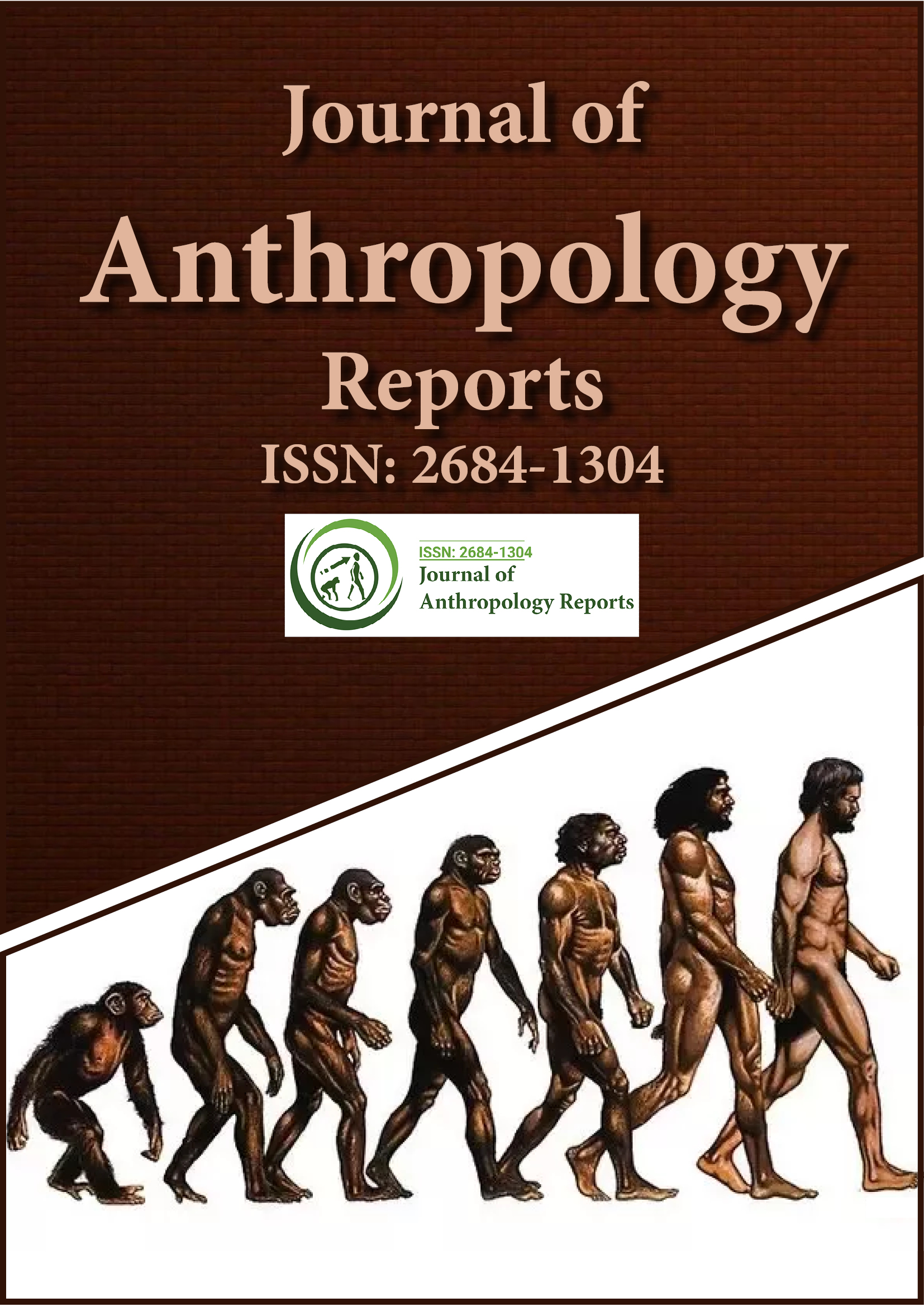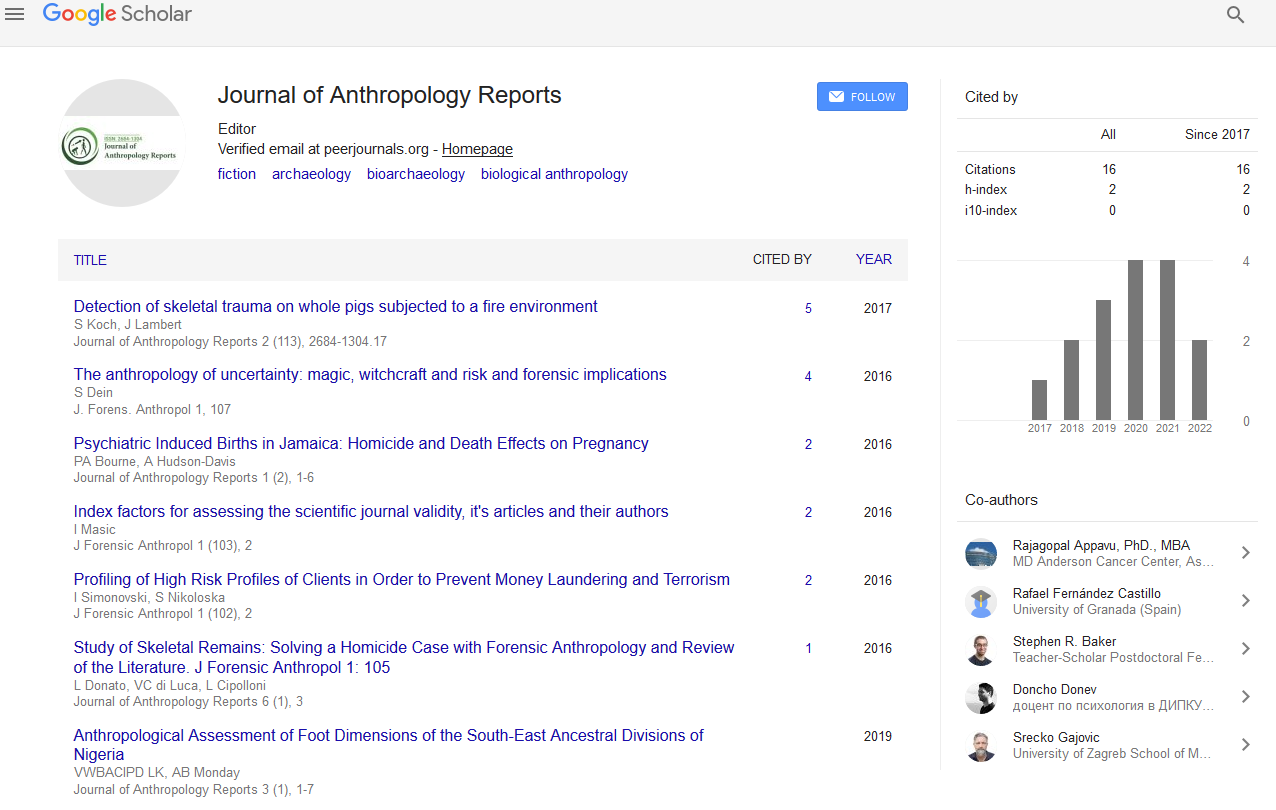Indexed In
- RefSeek
- Hamdard University
- EBSCO A-Z
Useful Links
Share This Page
Journal Flyer

Open Access Journals
- Agri and Aquaculture
- Biochemistry
- Bioinformatics & Systems Biology
- Business & Management
- Chemistry
- Clinical Sciences
- Engineering
- Food & Nutrition
- General Science
- Genetics & Molecular Biology
- Immunology & Microbiology
- Medical Sciences
- Neuroscience & Psychology
- Nursing & Health Care
- Pharmaceutical Sciences
Opinion Article - (2025) Volume 8, Issue 1
The Genetic Diversity of Isolated Human Populations
Leon Wei*Received: 24-Feb-2025, Manuscript No. JFA-25-29399; Editor assigned: 26-Feb-2025, Pre QC No. JFA-25-29399 (PQ); Reviewed: 12-Mar-2025, QC No. JFA-25-29399; Revised: 19-Mar-2025, Manuscript No. JFA-25-29399 (R); Published: 26-Mar-2025, DOI: 10.35248/2684-1304.25.8.218
Description
Human populations around the world carry patterns in their genetic makeup that reflect long histories of movement, adaptation, and separation. When communities remain in geographic or cultural isolation for extended periods, their genetic traits may shift in ways that differ from more interconnected groups. These patterns have long interested anthropologists, geneticists, and biologists who seek to understand how genes are passed on and shaped over time. Isolated populations can provide insight into how inherited traits behave when limited by social boundaries, distance, or environmental conditions.
Such groups may live on remote islands, deep in forests, in mountain valleys, or within regions where outside contact has been limited for generations. Over time, certain genetic traits become more frequent while others may disappear. The changes are often a result of random chance, small group size, and restricted marriage patterns. These processes, known in population genetics, shape how health conditions, physical characteristics, or rare gene variants appear in these communities.
One well-known example is how some island populations show high rates of specific conditions not commonly found elsewhere. In some cases, these conditions may have no clear effect on health, while in others they may influence risks for certain diseases. These patterns are not always harmful, nor do they define the entire group. Rather, they provide a way to see how isolation can lead to distinct genetic profiles over time.
Environmental factors also play a role in shaping traits within isolated communities. When people live in specific climates or rely on particular diets for long periods, certain inherited features may become more common. For example, populations living in high altitudes may develop greater oxygen efficiency over generations. In Arctic regions, cold resistance or body shape may reflect adaptation to harsh climates. These changes are not immediate but take shape over many lifetimes as people adjust to local conditions.
Isolation can also affect how certain cultural practices influence genetic patterns. In some communities, traditions may favor marriage within specific clans or social groups, limiting the range of gene mixing. This may increase the frequency of rare gene combinations or amplify traits that were once uncommon. While this can sometimes increase health risks, it also allows researchers to study gene functions more closely, especially when tracking inherited disorders or tracing population history.
Studying genetic variation in isolated groups is also important for understanding human migration. By comparing genetic data across regions, scientists can piece together how ancient populations moved, where they settled, and how they interacted. Traces of common ancestry can still be found in modern DNA, even if people today live far from each other. This information helps reconstruct paths taken by early humans as they spread across continents.
Preserving the genetic records of these groups must be approached with care and respect. Researchers often work closely with community leaders to explain the purpose of the studies and ensure that participants are informed. The history of misuse in some research efforts has led to greater awareness about the importance of ethics and consent in such work. It is important that scientific interest does not override the rights or dignity of the people involved.
Conclusion
While isolated groups may have unique genetic traits, it is important not to treat them as separate from the broader human story. All people share a common ancestry, and the differences that exist reflect natural variation shaped by time, chance, and environment. Diversity within and between populations is normal and expected. These differences should be viewed as part of human adaptability, not as markers of separation or superiority.
Citation: Wei L (2025). The Genetic Diversity of Isolated Human Populations. J Anthropology Rep. 8:218.
Copyright: © 2025 Wei L. This is an open-access article distributed under the terms of the Creative Commons Attribution License, which permits unrestricted use, distribution and reproduction in any medium, provided the original author and source are credited

